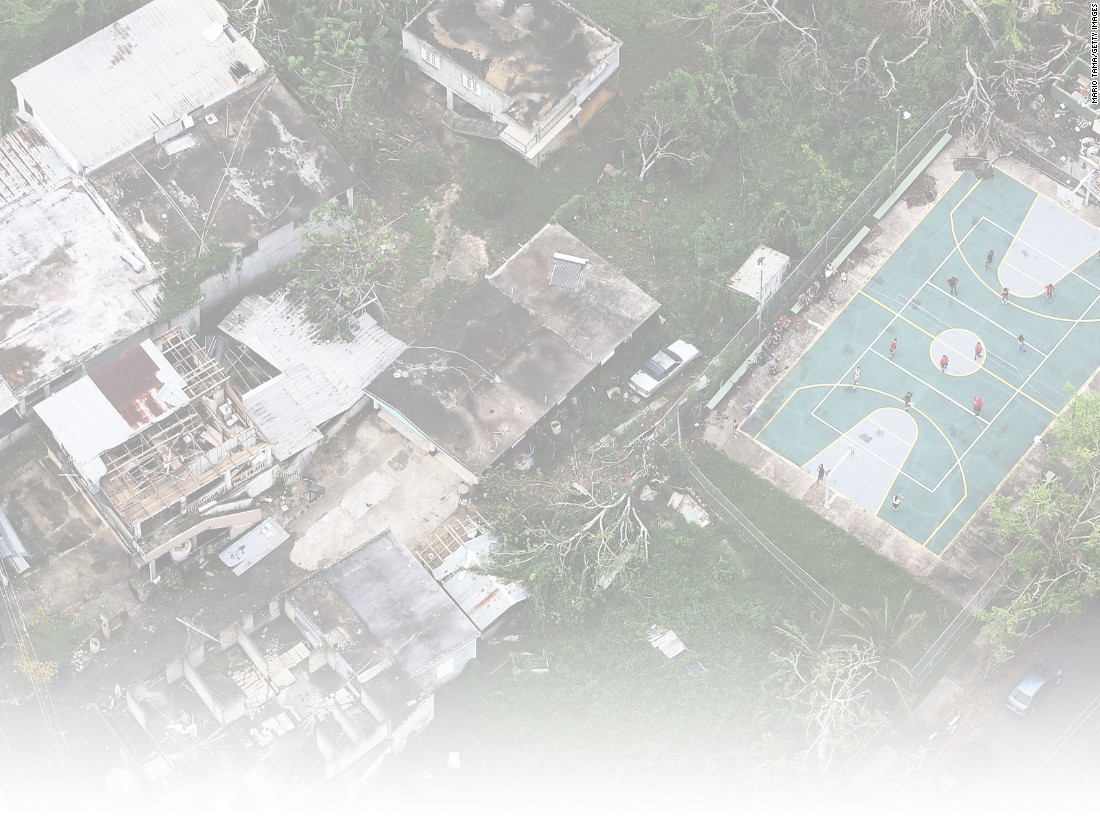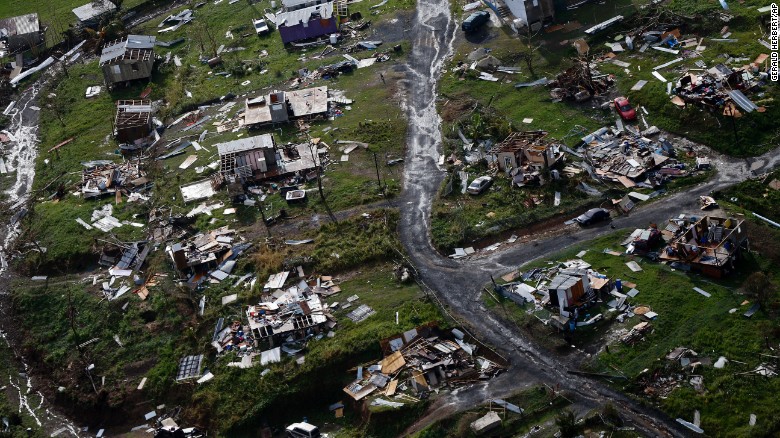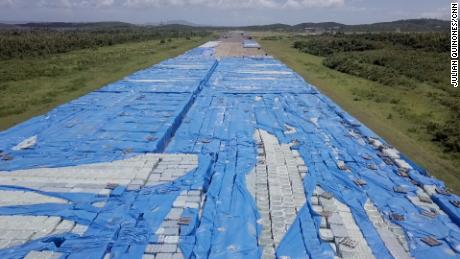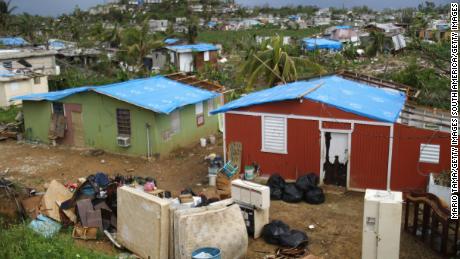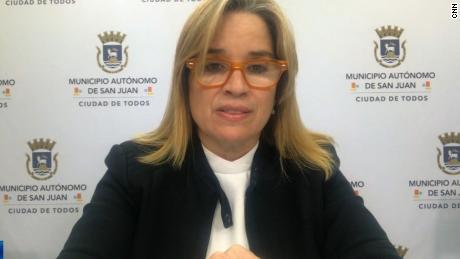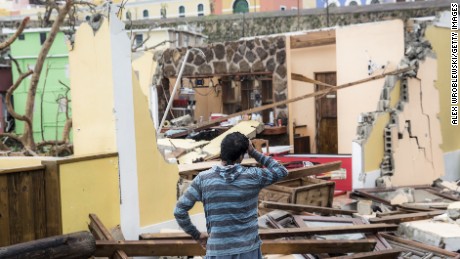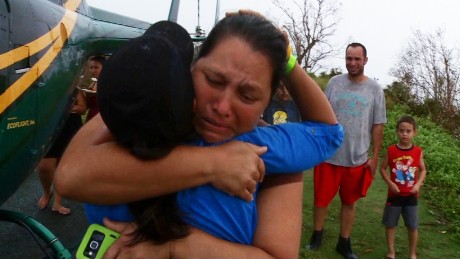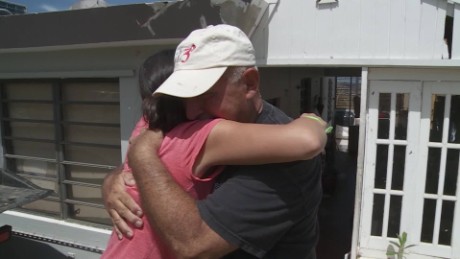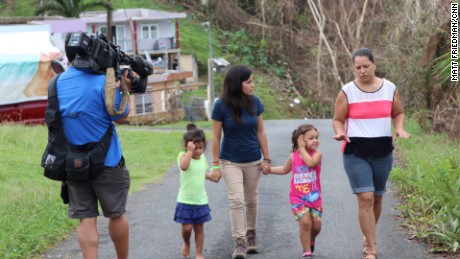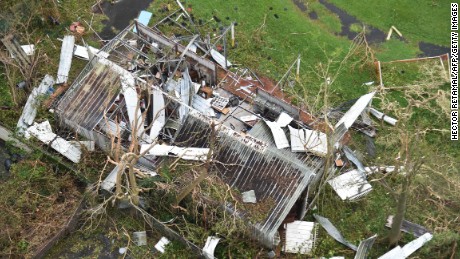How a month of hurricane nightmares changed Puerto Rico -- and me
Updated 2356 GMT (0756 HKT) October 21, 2017
CNN's Leyla Santiago has been in Puerto Rico since before Hurricane Maria hit one month ago.
San Juan, Puerto Rico (CNN)I am writing this in the dark. The hotel doesn't have power, and one of the generators failed. I had to walk up 10 flights of stairs to get to my hotel room because the elevators don't work. The lights have been flickering all night.
Such is life here.
If that's my biggest problem, however, I consider myself lucky.
I've covered devastation. I've covered disaster. I've covered destruction. Hurricane Maria was more.
It has upended the lives of 3.4 million people. It has cut off entire towns from each other. It has left residents without water to drink or bathe in. Enough aid has not come for many. The gravity of the recovery time is starting to set in.
Maria also devastated the people I call family, and destroyed the island that molded me into the person I am today. So for me, covering the devastation was personal. I owed it to the island that has given me so much. I was born here, and while I left when I was 3, I have returned for so many holidays. It's where I spent my summers and where I was married.
I fought the winds as the Category 4 storm smashed into Puerto Rico on September 20 and then reported the devastation around San Juan.
Most roads were closed so to see the impact outside the capital, we had to take to the air.
I was flying over an island I didn't recognize. It had no color. The once lush trees had been stripped of all shades of green. It was hard to find any power lines still standing. Even the typically bright turquoise of the ocean was muted.
We flew to some of the most remote, rural and hardest hit areas: Yauco, Utuado and Quebradillas. I will never forget how I was greeted.
When our chopper touched down in Quebradillas, a woman ran to embrace me. She was crying, desperately explaining she needed to reach her family in New Jersey. She hugged tightly, and didn't let go quickly. I was the first outsider she had seen since the hurricane hit.
Word spread quickly. The town surrounded us within minutes. No one knew who we were. They didn't ask for food or money. They were curious. Did we have cell service? Did we know what was happening in other towns?
As with other towns, we were their only source of news and the only way to share their own. They begged for help relaying messages home.
I asked for a list of names, numbers and a message. I promised them I would call later.
Then it was time to leave. Amid the chaos, I didn't even get the woman's name.
...
As we left Quebradillas to return to San Juan, the pilot asked if I needed to see anything else.
I asked him to fly over Corozal, a mountainous community in the interior.
He said we didn't have enough fuel to land, but a flyover was feasible. When he announced "This is Corozal," I was scared to look out the window. I was dreading what I would see.
"Whoa, it looks like a bomb went off here," the pilot says.
He didn't know it was my hometown, where my family has lived since the 1800s.
I had to look.
I didn't recognize what I saw. Trees were down, debris was scattered everywhere. For a few minutes, I couldn't even find a landmark to orient myself at all to the town I called home.
And I couldn't control the tears as we circled the destruction from above. I felt so helpless having family down there, but not being able to land, to reach them.
I snapped a picture. I left with a lot of guilt, thinking Corozal should have been my first stop.
When I got back to the hotel, I called my family in Florida. I told them Corozal didn't look good, but I couldn't bring myself to share the photo.
And then my crew and I pulled out the names and numbers given to me earlier to call friends and families and deliver news.
One note read simply:
1. Tony OK
2. Tony @ Frank's House
3. Villa damaged but repairable
4. Cell out
5. Love you all!
We made call after call, trying to share as much as we could with loved ones.
...
A couple of days after flying over Corozal, I overheard that the road was now clear.
Soon, I was on that road. For 45 minutes from San Juan to Corozal, my heart was pounding.
We stopped at a shelter on the way to my family's street.
I was appalled. More than 120 people were now living in the town's high school classrooms. There were children with asthma, an elderly woman with Parkinson's disease, and a woman with cancer. The staff was struggling to meet their needs. The generator was out. All of the food in the refrigerator had spoiled. The bathrooms were becoming unsanitary. People needed medicine.
It had been nine days since the hurricane. Corozal was in horrible shape. They needed help. And after seeing the shelter, I needed to find my family.
I went straight to my uncle's house. I'm not sure if I waited for the car to stop before I jumped out. I saw my uncle's car shop was destroyed, the roof completely ripped off. I walked in through the open door and shouted his name from the living room. That's when I saw him, and my other family members.
They were OK.
My uncle Jesus and I couldn't stop hugging. He kept describing the damage as we hugged.
"I know, Tio, I flew over here a few days ago but I couldn't land," I admitted to my uncle in tears.
"It's OK," he said as he hugged me again. "We're OK."
And that's all I needed to hear.
As days turned into weeks, the reality of the scope of damage across the island has become even more clear.
To tell the story of what life has become, we decided to try to find the woman from the mountainside who hugged me so tightly just days after the hurricane.
We headed to her municipality, asking around and showing the video of the hug on my cell phone. We found a family member who showed us to her home. Her name was Brenda.
She immediately recognized me, and gave me another tight hug. Not much help has arrived since my last visit.
In fact, conditions have grown so bad after Maria, they are tearing apart her family.
One of Brenda's children decided the conditions were no longer safe, that her 3-year-old grandchildren should go to Florida and Connecticut, where they had other family.
Three years old. That's the age when I left Puerto Rico, with my military family for a posting in Panama and then South Carolina. The circumstances are so different, but I know those children's lives will change forever.
...
But then, Puerto Rico has also changed forever.
The struggles are everywhere. And where there is help or supplies, there are lines, always lines.
Some days, it would be people lining up for gas. And then for food at the supermarket. The longest lines were now to use the ATM.
I became numb to the lines quickly.
When we passed another long one at the port, I didn't think anything of it. Until it hit me.
Thousands were lining up to leave Puerto Rico. I watched as an old man dragged an oxygen tank, while pleading with organizers to let him on that massive cruise ship now acting as a refugee transport. Another man lifted his shirt to show the scars from an operation, hoping it would convince the right people that he needed to get off the island.
The last time I saw a cruise ship anchored here, I could hear music and laughter coming from tourists on board. This time, there were no celebrations. These weren't tourists. The ship would soon be filled with thousands of Puerto Ricans carrying suitcases fleeing the hurricane-ravaged island.
How could one hurricane force so many to leave their homes?
The images unfolding before my eyes reminded me of scenes from the 1950s, when a wave of Puerto Ricans left the island, most permanently. Many in today's exodus said the plan was to "come back." I couldn't help but wonder how many would actually return.
As the line dwindled, my heart seemed to do the same. The sun set. All passengers boarded. The horn blasted, and I sobbed. I shed more tears for that line than anything else I encountered on this island over the last month.
I found myself humming the words to a famous song in Puerto Rico. It is the song my grandfather sang to me when I was a child back in Corozal, "En Mi Viejo San Juan."
Me voy, ya me voy, pero un d├Ła volver├®
(I am leaving, I am now leaving, but someday I will return.)
A buscar mi querer
(to search for my love)
A so├▒ar otra vez
(to dream once again)
En mi viejo San Juan.
(In my old San Juan)
My dream, after Maria, is that someday they will return -- to the island I remember.

